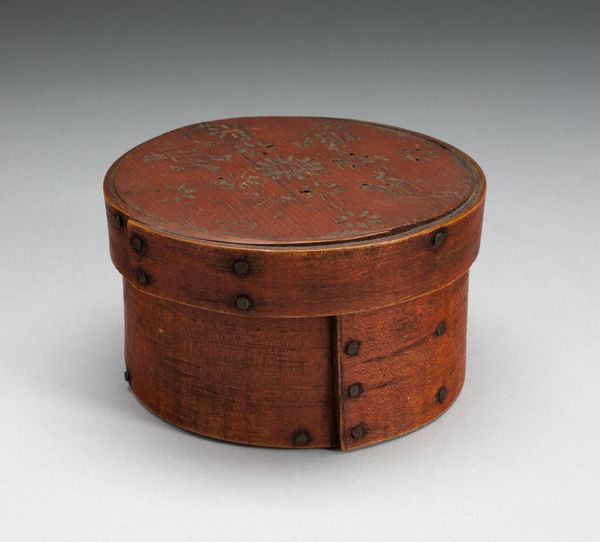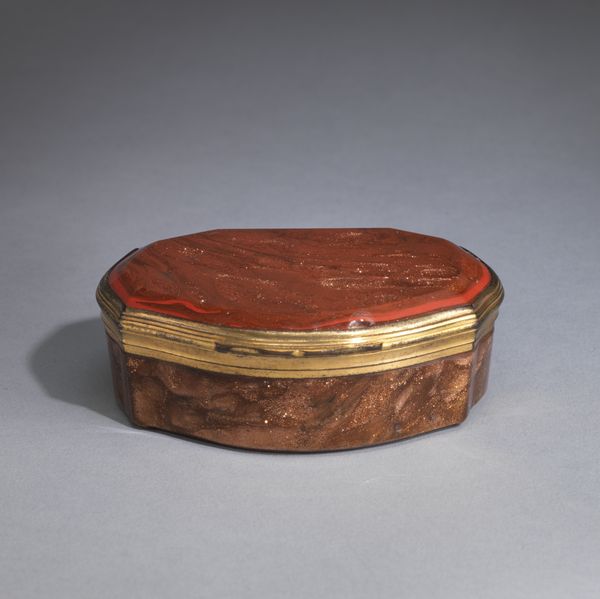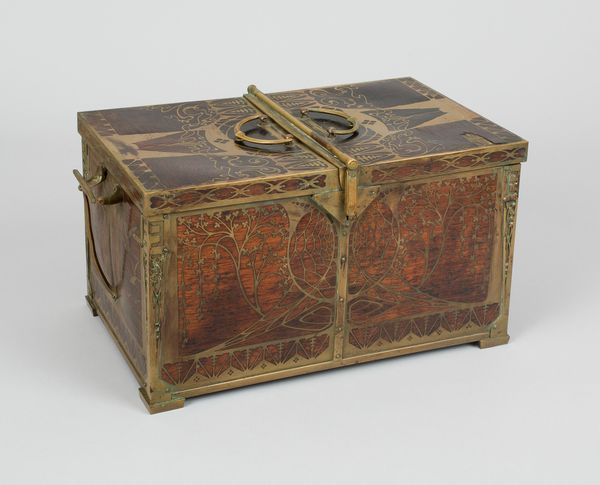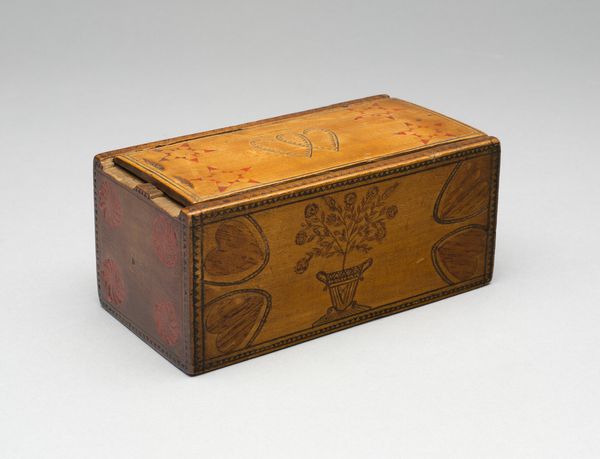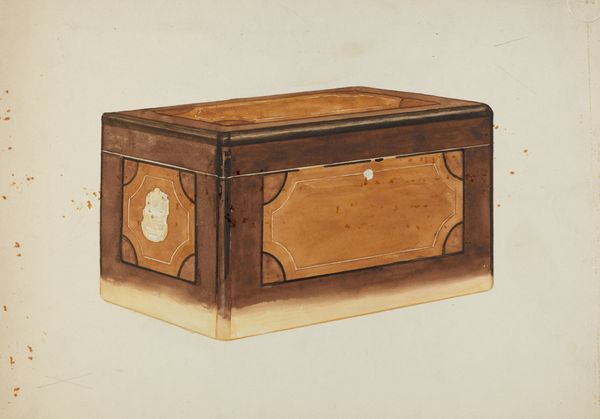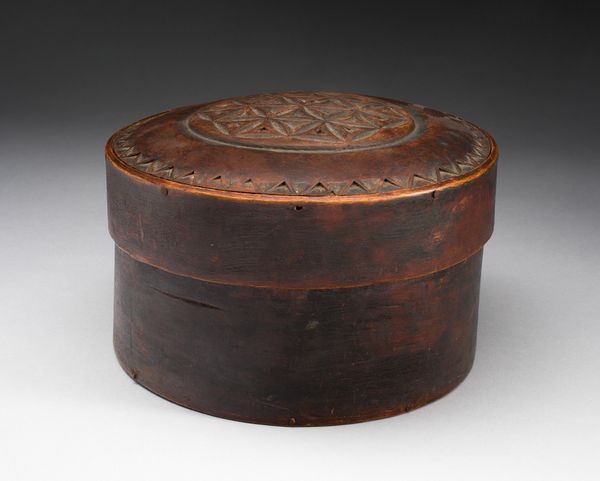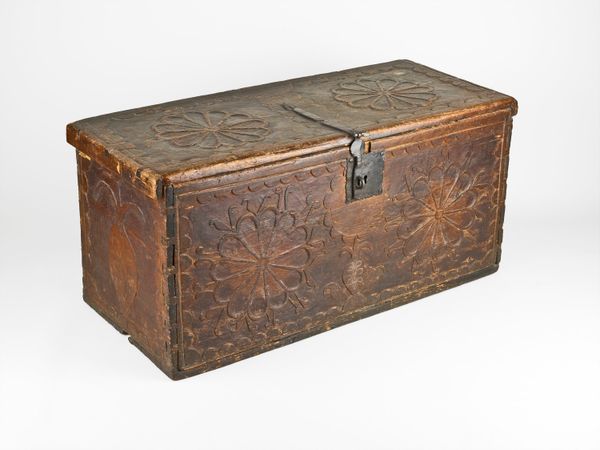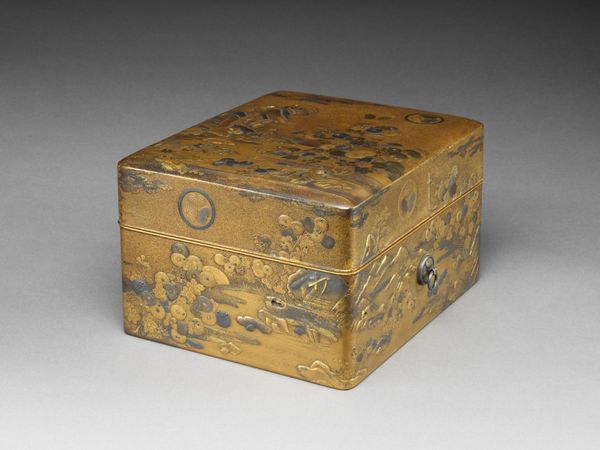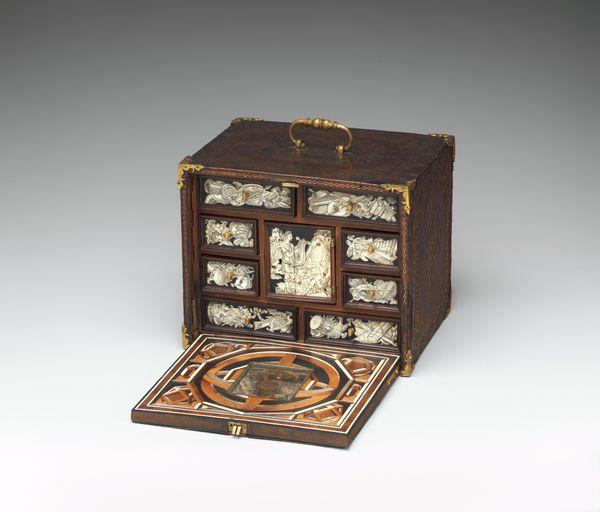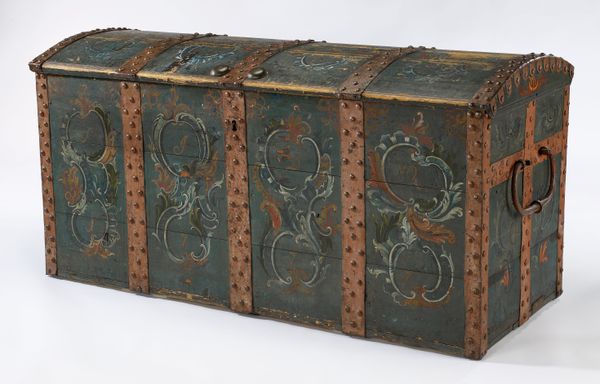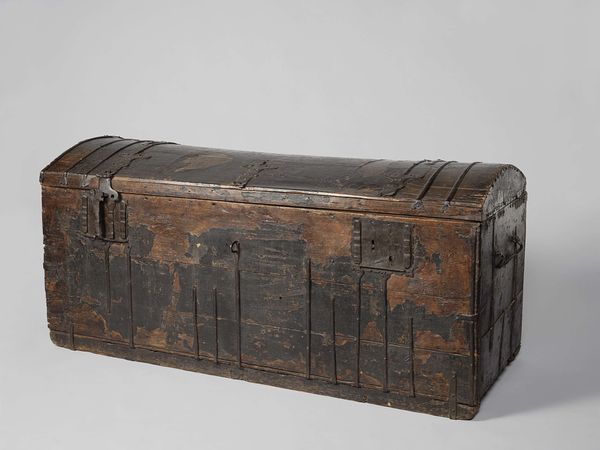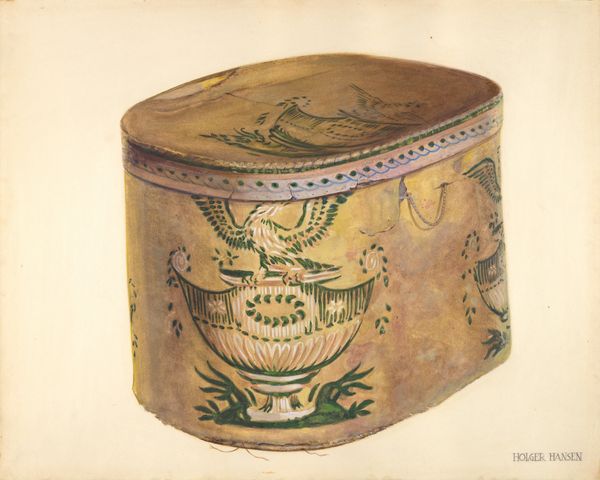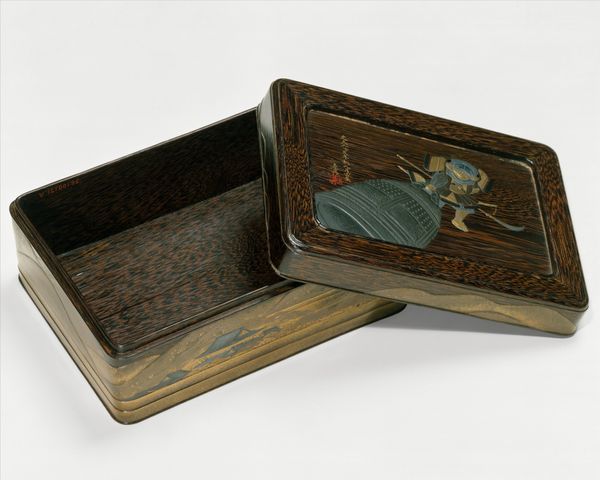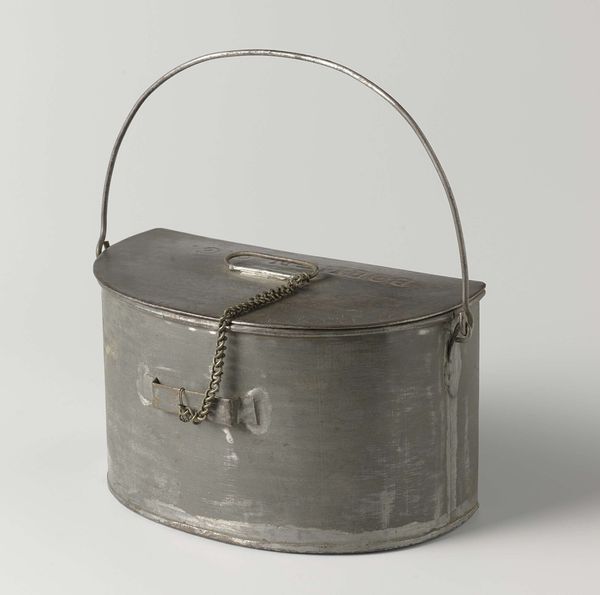
ceramic, sculpture, wood
#
sculpture
#
asian-art
#
ceramic
#
sculpture
#
ceramic
#
wood
#
decorative-art
Dimensions: height 9 cm, width 18.7 cm, depth 11.1 cm
Copyright: Rijks Museum: Open Domain
Editor: So, here we have a rather fascinating "Doos met deksel", or lidded box, crafted sometime between 1675 and 1725 by Ritsuō. The materials seem to be a combination of ceramic and wood. There's an interesting contrast between the smooth curves and the rough, textured surfaces. What jumps out to you? Curator: The combination of ceramic and wood immediately makes me consider the socio-economic conditions of its production. This blending challenges our typical categories. Is it "high" art or "craft?" Where was this made and who would have used such an item? The addition of decorative elements invites an examination of the labor invested here; the work suggests not just function, but a level of artistry linked to social meaning. Editor: That’s interesting. I was just thinking about it as a pretty container, but you are right, what *was* its purpose? Curator: Exactly! Its function as a container becomes almost secondary. The *idea* of containing is overwhelmed by this emphasis on the materials and their combination. Think about the selection of materials; what was available, what skills did the maker possess? What meanings might the original audience have understood from it? Also, consider who would have had access to it: a patron or an everyday buyer. Editor: It really makes you rethink what you’re seeing. The decorative carving becomes not just ornamentation but part of the dialogue of production. Curator: Precisely. We begin to perceive this "Doos met deksel" not just as an object but as a tangible record of its making. A synthesis of skill, labour and value. Editor: So by focusing on the material and the how it was created, we gain a different appreciation for the artwork? Curator: Indeed! And understanding production and material helps understand not only an artwork itself, but also its culture and position.
Comments
No comments
Be the first to comment and join the conversation on the ultimate creative platform.
